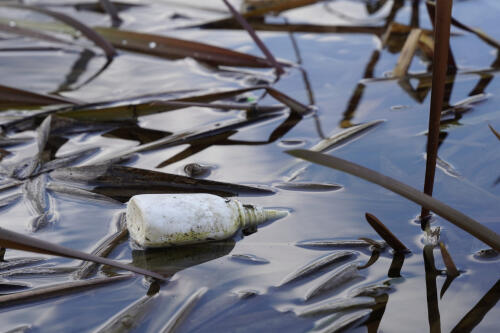PFAS
Tuscany joins the now extensive list of Italian regions contaminated by PFAS. To reveal it a series of samplings carried out independently by Greenpeace which confirm the alarm that had already been launched in 2013 by the National Research Council (CNR) and the Water Research Institute (IRSA).The analyzes conducted by the environmental organization found high concentrations of the contaminant in the region's waterways, especially downstream of the rivers, where the concentration was up to 20 times higher than upstream.«The picture of contamination that emerges from our analyzes is anything but reassuring.Some cases have been well documented for at least ten years, but the Tuscany Region has never seriously addressed the problem:in fact, there is no provision on industrial waste", commented Giuseppe Ungherese, head of the Greenpeace Pollution campaign who also underlined that it is needed as soon as possible start investigations on drinking water.Tuscany is the fourth Italia...
After having conducted an investigation that shed light on the presence of PFAS - poly and perfluoroalkyl substances - in the drinking water of dozens of municipalities throughout Piedmont, in recent days the Greenpeace Italia association has officially presented four complaints to the Turin Prosecutor's Office, Ivrea, Alessandria and Novara, asking the judiciary to take "all the necessary precautionary measures" in order to "prevent the continued administration of waters containing PFAS”.In the complaint, Greenpeace urged the magistrates to ascertain whether, considering the state of permanent pollution of the areas in question, "the conditions exist to hypothesize crimes of environmental or unnamed disaster", as well as "omission of official acts resulting in failure to comply with the legislation on access to documents".Despite the insight that emerged from the Greenpeace investigation, in recent days the Health Councilor Luigi Icardi has tri...
PFAS, the “forever chemicals” that have been raising health concerns across the country, are not just a problem in drinking water. As these chemicals leach out of failing septic systems and landfills and wash off airport runways and farm fields, they can end up in streams that ultimately discharge into ocean ecosystems where fish, dolphins, manatees, sharks and other marine species live. We study the risks from these persistent pollutants in coastal environments as environmental analytical chemists at Florida International University’s Institute of the Environment. Because PFAS can enter the food chain and accumulate in marine plants and animals, including fish that humans eat, the spread of these chemicals has ecological and human health implications. Biscayne Bay and nearby coastal areas are teeming with fish, including many varieties that people eat. NPS image by Shaun Wolfe I...
After the large cases in Veneto, followed by those in Lombardy, PFAS contamination of drinking water has also been reported in Piedmont, where in addition to the already known case of Alessandria, other pollution situations have been identified in over 70 municipalities of the metropolitan city of Turin , including the capital.The one reporting it is a relationship shared yesterday by Greenpeace, which is based on official data from the Piedmontese public bodies for which the association has mandated access instance;in addition to this type of data, Greenpeace has conducted studies independently, carrying out sampling in areas where, unlike those of Turin and Alessandria, the possible presence of PFAS it is not monitored, finding its presence in the Novara area.According to the environmental association, in the Piedmont Region they are approximately 125,000 people who may have drunk water contaminated by PFAS, given that it once again denies the narrative we have become accustomed to a...
PFAS chemicals seemed like a good idea at first. As Teflon, they made pots easier to clean starting in the 1940s. They made jackets waterproof and carpets stain-resistant. Food wrappers, firefighting foam, even makeup seemed better with perfluoroalkyl and polyfluoroalkyl substances. Then tests started detecting PFAS in people’s blood. Today, PFAS are pervasive in soil, dust and drinking water around the world. Studies suggest they’re in 98% of Americans’ bodies, where they’ve been associated with health problems including thyroid disease, liver damage and kidney and testicular cancer. There are now over 9,000 types of PFAS. They’re often referred to as “forever chemicals” because the same properties that make them so useful also ensure they don’t break down in nature. Facing lawsuits over PFAS contamination, the industrial giant 3M, which has made PFAS for many uses for decades, announced a US$10.3 billion settlement with public w...




